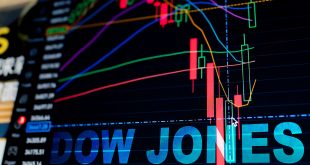Market Drivers – US Session: Dollar rallies as war drums beat louder in the Middle East
Dollar Rallies Amid Middle East Tensions
Geopolitical unrest in the Middle East has taken center stage, driving a surge in the US Dollar (USD) as investors seek safe-haven assets. The escalating conflict between Israel and Iran, coupled with potential US involvement, has overshadowed economic data and monetary policy decisions, pushing the USD to a four-day high. This article explores the key drivers behind the dollar’s rally, the broader market implications, and what to watch in the near term.
Geopolitical Risks Fuel Safe-Haven Demand
The intensification of the Israel-Iran conflict has rattled global markets. Recent reports indicate that US President Donald Trump has signaled a willingness to involve American military assets in the region, escalating tensions further. This development has dampened hopes for a swift resolution, prompting investors to flock to safe-haven assets like the USD and gold. The US Dollar Index (DXY) climbed 0.74% to 98.86, reflecting heightened demand despite a sharp drop in US Treasury yields. Gold prices, meanwhile, remained steady near $3,390, with central banks reportedly planning to bolster reserves, signaling sustained interest in bullion.
The prospect of prolonged conflict raises questions about global stability. If tensions persist, safe-haven flows could continue to prop up the USD, potentially at the expense of riskier currencies and equities. Investors should monitor developments in the Middle East, particularly any actions involving the US, as these could further shape market sentiment.
Economic Data Takes a Backseat
Despite the USD’s strength, US economic indicators painted a weaker picture. May’s Retail Sales data showed a sharp 0.9% month-on-month decline, marking the second significant contraction this year. Industrial Production also disappointed, yet these figures were largely overshadowed by geopolitical concerns. The Federal Open Market Committee (FOMC) is set to announce its interest rate decision on June 18, with markets anticipating no change. However, the odds of a September rate cut have fallen to around 50%, reflecting uncertainty about the Federal Reserve’s next moves.
Other major currencies struggled against the USD. The EUR/USD dipped below 1.1500, despite positive German ZEW figures, as ECB officials adopted a cautious, data-dependent stance. Key Eurozone data, including HICP figures and the EU Current Account, will provide further insight. Similarly, GBP/USD faced pressure from risk aversion, even as the Bank of England is expected to hold rates steady on June 19, with UK inflation data due beforehand. The USD/JPY rose above 145.00 after the Bank of Japan maintained rates at 0.50%, with Governor Ueda noting increased downside risks to the economy.
Market Outlook and Key Indicators
The interplay between geopolitics and economic data will dictate market direction. Wednesday’s US data releases, including Initial Jobless Claims, Housing Starts, and Building Permits, alongside the FOMC’s decision, could influence the USD’s trajectory. In the commodities space, WTI crude surged 4.82% to $73.33 per barrel, reflecting fears of supply disruptions amid Middle East tensions. For other currencies, upcoming data such as New Zealand’s Current Account and Japan’s Reuters Tankan Index and Balance of Trade will be critical.
The current environment underscores the USD’s resilience as a safe-haven currency during times of uncertainty. While economic fundamentals remain relevant, geopolitical developments are likely to dominate in the near term. Markets will need to navigate this volatile landscape carefully, balancing risk aversion with emerging economic signals.
 Noor Trends News, Technical Analysis, Educational Tools and Recommendations
Noor Trends News, Technical Analysis, Educational Tools and Recommendations





